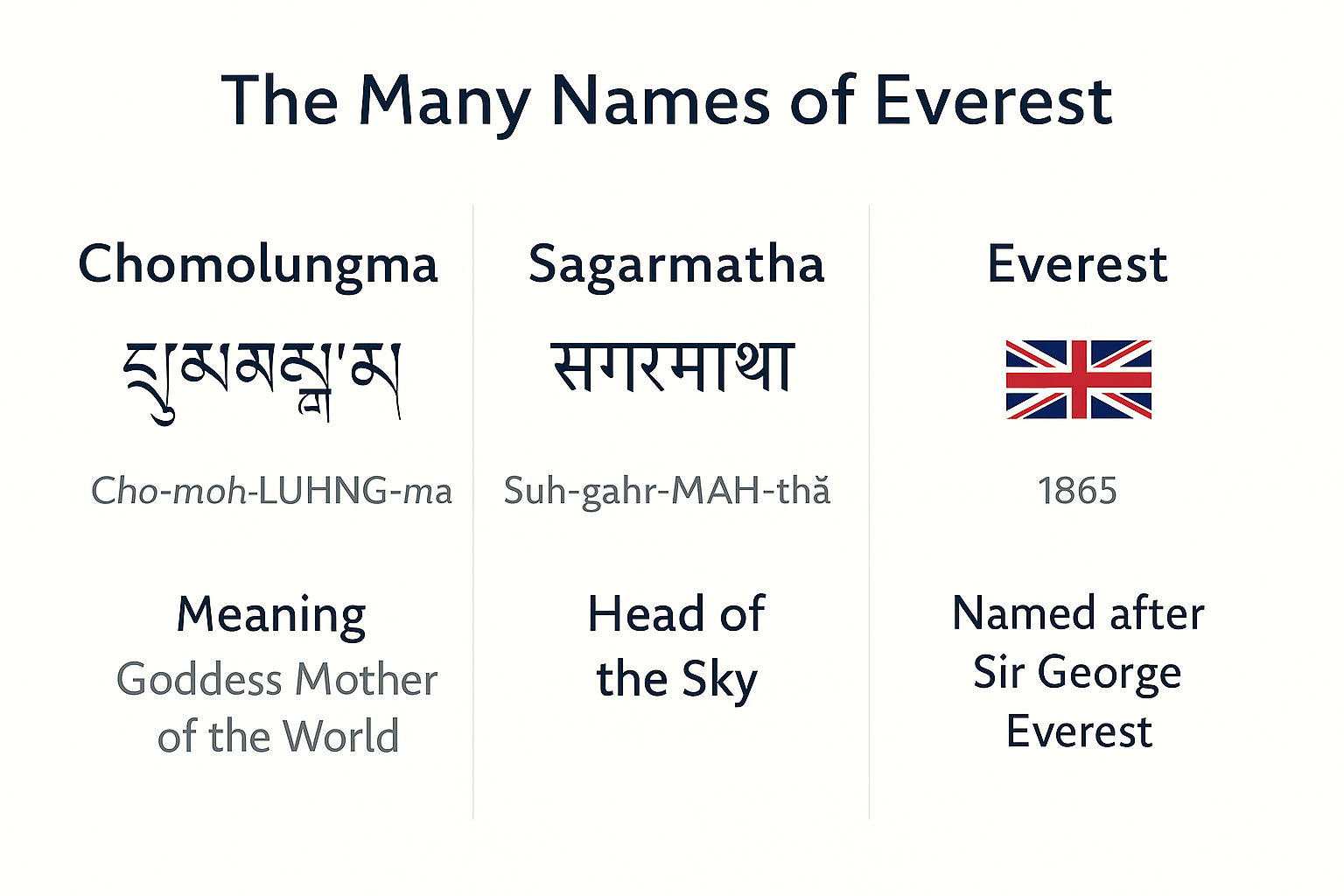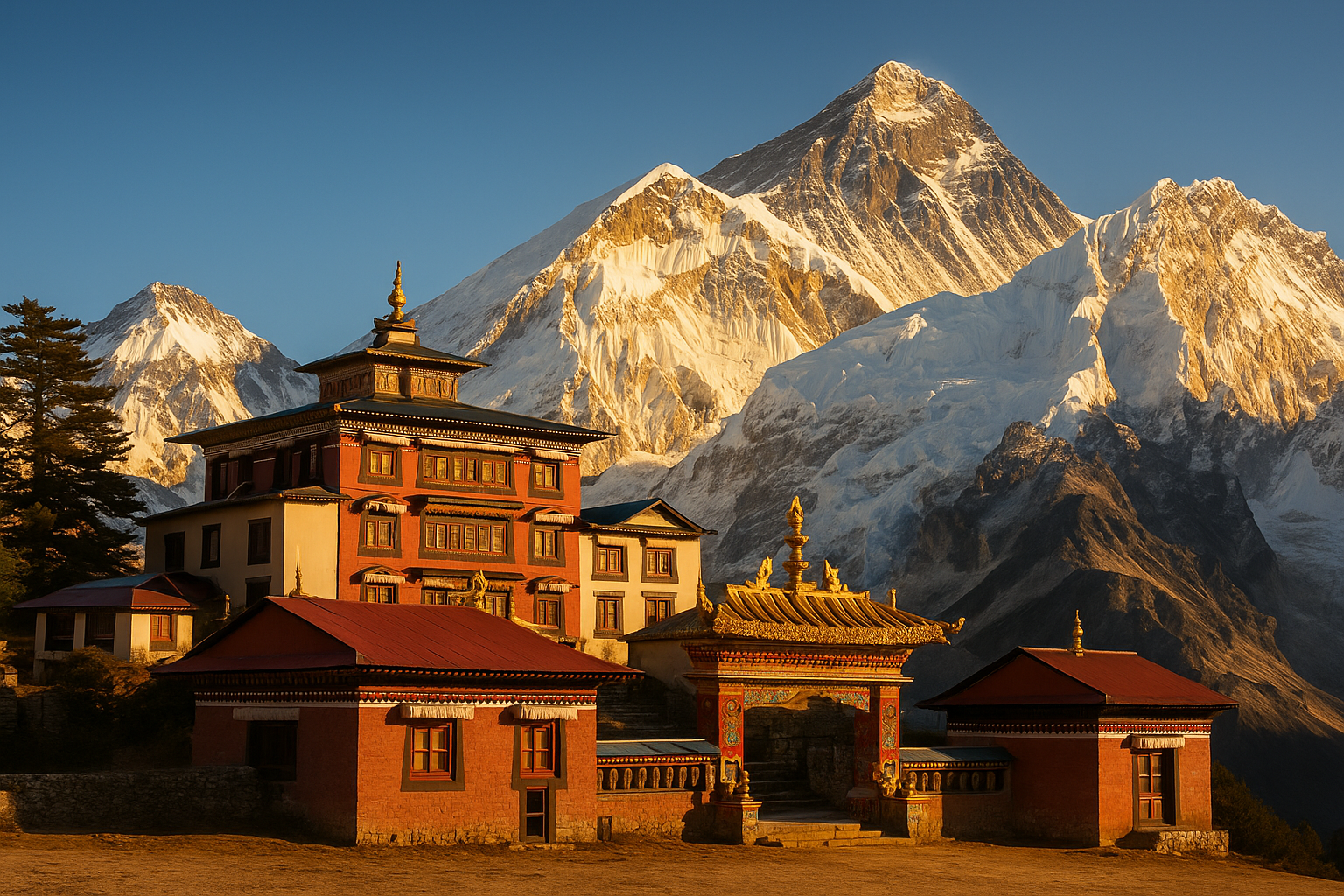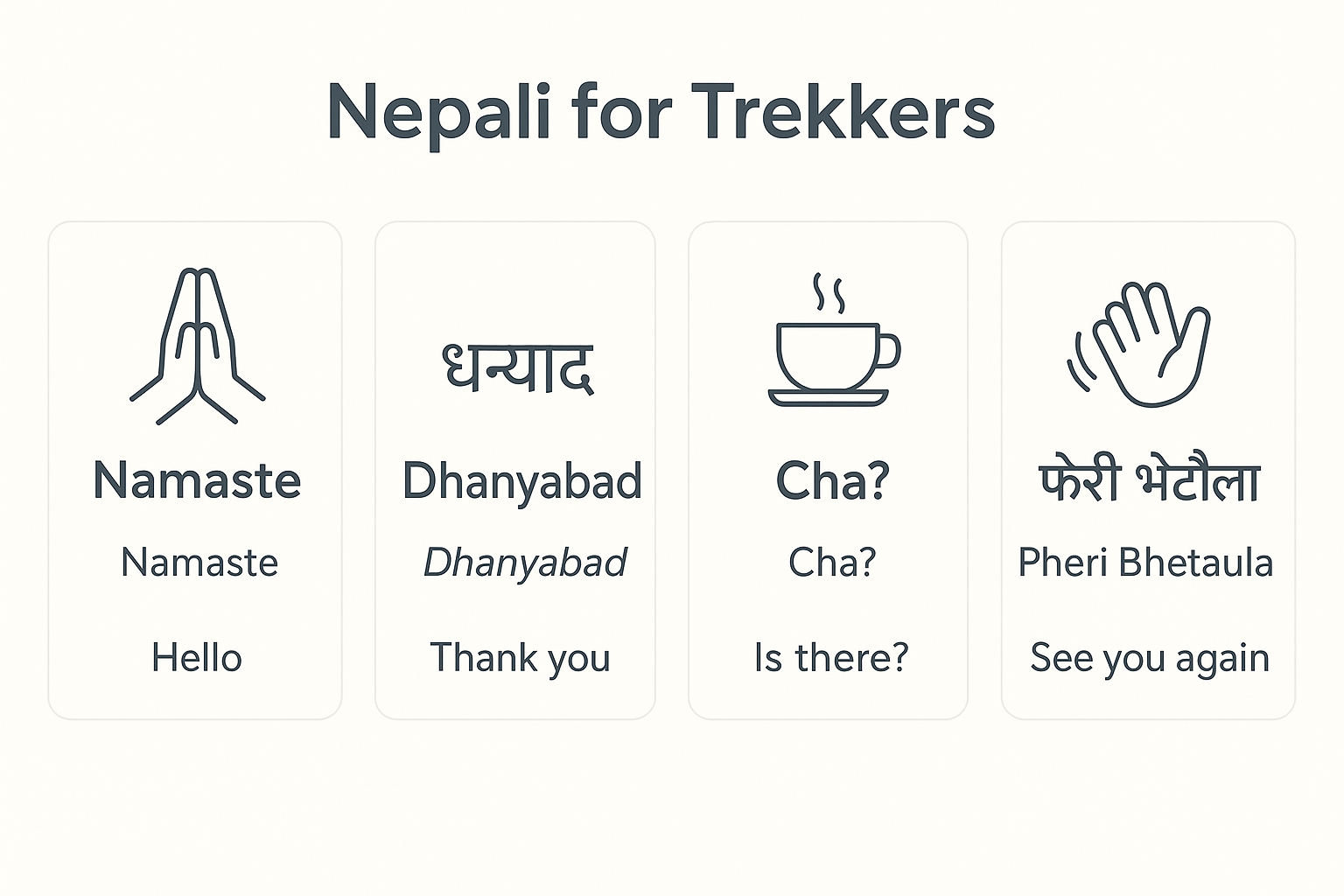Everest Culture: Sherpa Traditions, Festivals & Spiritual Meaning
For millions viewing it from afar, Mount Everest represents the ultimate climbing challenge—a physical feat. However, for the local communities residing in its shadow, it signifies much more. The mountain is a sacred pillar of Everest culture, a spiritual symbol, and the revered home of deities. To truly understand Everest, one must look beyond its summit and explore the rich tapestry of traditions, beliefs, and languages defining this unique corner of the world.
It is a journey into a world where the mountain is not just a peak to be scaled, but a presence deserving respect.
Names & Meanings: More Than a Mountain
The name “Everest” is a colonial relic, bestowed by the British in 1865 in honor of Sir George Everest, a surveyor who had never seen the peak. Local people have always given the mountain names that reflect its spiritual power.

Chomolungma: Goddess Mother of the World
For centuries, Tibetans have called the mountain Chomolungma. What does Chomolungma mean? It translates to “Goddess Mother of the World” or “Goddess Mother of the Land.” This name personifies the mountain as a powerful, life-giving deity, which demands both honor and appeasement.
Sagarmatha: Head of the Sky
The meaning of Sagarmatha is “Head of the Sky.” This is the official Nepali name, created in the 1960s as a modern, national identity for the mountain within Nepal’s borders. While widely used, Chomolungma remains the name with deeper historical and spiritual roots for the people of the Khumbu region.
Sherpa Culture & Daily Life
The narrative of Everest climbing is intrinsically linked to the story of the Sherpa people. Sherpa culture Everest is a cornerstone of the region’s identity, built on resilience, community, and a deep connection to the mountains.
Who Are the Sherpa People?
Contrary to popular belief, “Sherpa” is not a job title for a porter. It is the name of an ethnic group who migrated from the eastern Tibetan province of Kham around 500 years ago. Their name reflects this origin: “Shar” (east) and “wa” (people). Their adaptation to high-altitude life made them physiologically unique and invaluable to the history of mountaineering. For a deeper look, visit our guide to Sherpa life and traditions.
The Changing Role in Expeditions
Initially hired as porters, the role of Sherpas has evolved significantly. Today, they are highly skilled guides, expedition leaders, and business owners who form the backbone of the Everest industry. However, this economic boom has also brought profound changes to their traditional agrarian lifestyle.
Festivals & Celebrations
The cultural calendar of the Khumbu is marked by vibrant festivals that bring communities together. These events offer a fascinating insight into the region’s spiritual life.
While Everest climbing is deeply rooted in spiritual traditions, modern climbing culture has developed its own irreverent traditions. Explore climbing humor and funny route names that showcase the lighter side of mountaineering, from absurd route nomenclature to the jokes that help climbers cope with extreme danger.
Mani Rimdu: The Masked Dance Festival
The Mani Rimdu festival Everest is the most significant spiritual event for the Sherpas. Held at the Tengboche Monastery, this 19-day festival culminates in three days of public ceremonies. Monks wear elaborate masks and costumes to perform sacred dances that depict the triumph of Buddhism. It’s a powerful and colorful spectacle set against the backdrop of the high Himalayas.

The Everest Puja Ceremony
No climber attempts Everest without participating in an Everest Puja ceremony. This Buddhist ritual is held at Base Camp to ask the mountain deities for safe passage. A lama (monk) presides over the ceremony, blessing the climbers and their equipment. It is a critical tradition that underscores the importance of humility and respect, linking directly to expedition safety.
National Festivals: Dashain & Tihar
While Mani Rimdu is specific to the Sherpa community, national Hindu festivals like Dashain and Tihar are also celebrated throughout Nepal, including in the lower Khumbu. These festivals bring families together and add another layer to the region’s diverse cultural fabric. Explore more at our page on Everest festivals.
Spiritual Significance
The Everest spirituality is deeply embedded in Tibetan Buddhism. The mountains are perceived not as inert rock and ice, but as the homes of gods, goddesses, and spirits.
Miyolangsangma: The Goddess of Everest
According to ancient beliefs, Chomolungma is the palace of Miyolangsangma, the goddess of inexhaustible giving. She is one of the five “Long Life Sisters” who reside on the highest Himalayan peaks. Miyolangsangma is a benevolent deity who provides wealth and fortune, but she must be respected. Disrespecting her or the mountain is believed to bring misfortune.
Sacred Sites Along the Routes
The trekking routes to Everest are dotted with spiritual landmarks. From mani stones carved with mantras and colorful prayer flags fluttering in the wind to ancient monasteries like Tengboche on the Nepali side and Rongbuk (the world’s highest) on the Tibetan side, the landscape is a living temple. These sites act as constant reminders of the region’s sacred nature. Learn more about the spiritual landscape of Everest.
Language & Communication
Effective communication is essential for connecting with the local culture. While English is common in tourist areas, knowing a few basic phrases can open doors and show respect.
Nepali vs. Sherpa Language
Nepali is the national language of Nepal and is a member of the Indo-Aryan language family. The Sherpa language (Sherpali) is distinct and belongs to the Tibeto-Burman family, making it mutually unintelligible with Nepali. Most Sherpas are bilingual, speaking both their native tongue and Nepali.
Nepali Phrases for Everest Trekkers
Learning a few words of Everest language basics (Nepali) can greatly enhance your experience:
- Namaste (nah-mah-stay): A respectful greeting meaning “I bow to the divine in you.”
- Dhanyabad (dhan-ya-baad): Thank you.
- Kasto Chha? (kuh-sto-chuh): How are you?
- Ramro Chha (ram-ro-chuh): I am fine. / It is good.
For more, check out our trekker’s language guide.

Sherpa Today: Between Tradition & Modernity
The rise of the Everest expedition industry has brought both prosperity and challenges to the Sherpa community. Young Sherpas now have opportunities for education and business that were unimaginable to their grandparents. However, this has also led to a gradual erosion of traditional practices and a growing concern for the preservation of their unique cultural identity and the fragile alpine environment.
Key Takeaways
- Everest culture is defined by the Sherpa people and their deep spiritual connection to the mountain, which they call Chomolungma (“Goddess Mother of the World”).
- The mountain is not just a physical landmark but a sacred place, home to the goddess Miyolangsangma, requiring respect and reverence from all who visit.
- Key cultural practices include the Everest Puja ceremony for safety and vibrant festivals like Mani Rimdu.
- Understanding and respecting these traditions is as important as any physical preparation for a journey into the heart of the Himalayas.
Frequently Asked Questions (FAQ)
What is the meaning of Chomolungma and Sagarmatha?
Chomolungma is the Tibetan name for Mount Everest, meaning ‘Goddess Mother of the World.’ It reflects the mountain’s spiritual significance as a deity. Sagarmatha is the Nepali name, meaning ‘Head of the Sky,’ which was created in the 1960s to give the mountain a local Nepali identity.
What is the Mani Rimdu Festival?
Mani Rimdu is the most important religious festival for the Sherpa people of the Everest region. Held annually at monasteries like Tengboche, it is a multi-day event featuring intricate masked dances by monks, prayers, and community feasts, celebrating the victory of Buddhism over the ancient Bon religion.
Do Sherpas worship Mount Everest?
Yes, in a sense. For the Sherpa and Tibetan Buddhist communities, Mount Everest (Chomolungma) is a sacred mountain, considered the home of the goddess Miyolangsangma. They see it as a powerful spiritual place that must be treated with respect and reverence, not just as a rock to be conquered. This is why the Puja ceremony is performed before every climb.
What language is spoken at Everest Base Camp?
Multiple languages are spoken. Nepali is the official language of Nepal and is widely used for communication between different ethnic groups. The Sherpa people have their own language, Sherpa, which is closely related to Tibetan. Due to the international nature of expeditions, English is the lingua franca for communication between climbers, guides, and staff.

Daniel Whitaker is a mountain journalist and lifelong climber with over 15 years of experience in the European Alps and the Andes. Although he has not yet attempted Mount Everest, he has summited several 6,000-meter peaks in South America and multiple classic alpine routes in the Mont Blanc massif. Daniel specializes in writing about the culture, history, and psychology of mountaineering. His work combines first-hand mountaineering experience with extensive research on Himalayan expeditions, making him an engaging guide to Everest’s enduring myths, records, and inspirational quotes.
